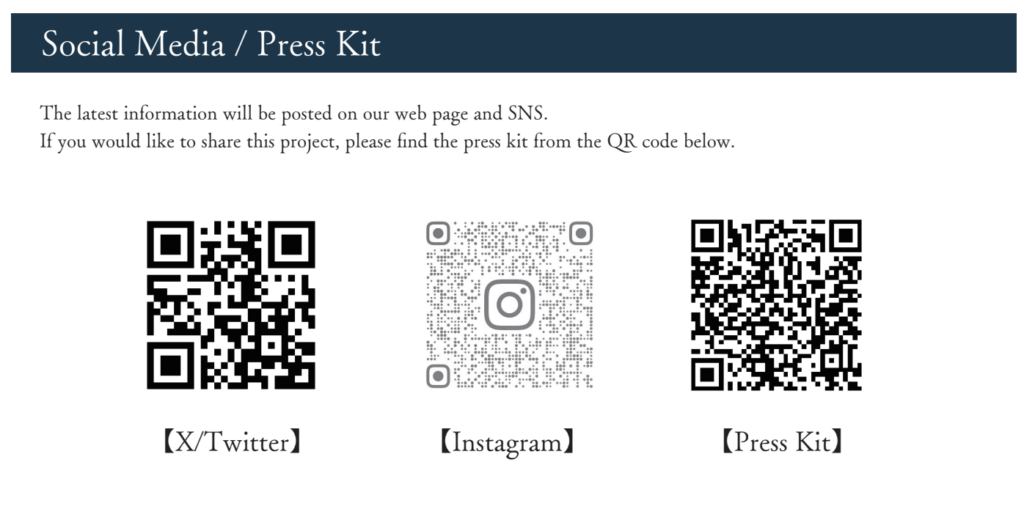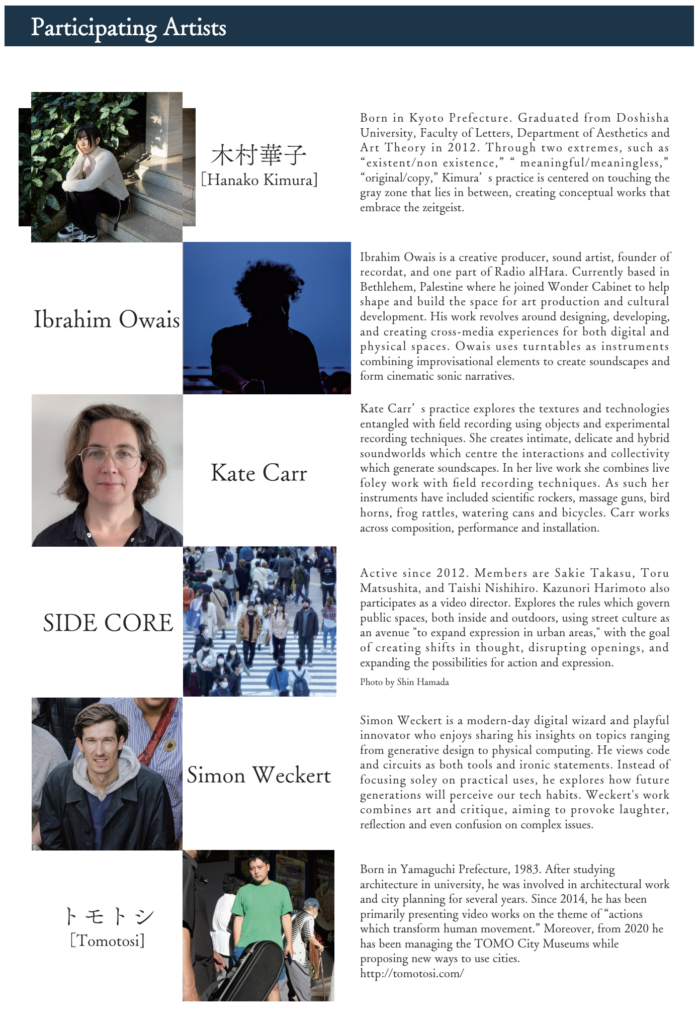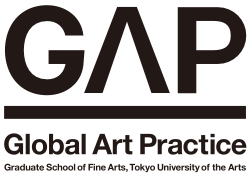[On campus exhibition/学内展示]
In what ways can not only works of art but exhibitions as a whole break free from institutional display? Can we make the instrument of advertisement into another site of exhibition? Going even further, can we activate the entire exhibition by physically moving it around a city? In order to bring the intended mobile nature of the exhibition into reality, we must disengage from the system, directly act on the city itself, and decentralize from the traditional hierarchy applied to institutional spaces. When the protection afforded by the white cube no longer applies, the private sphere providing relatively high levels of freedom to the artist and curators, we must negotiate the rules and regulations governing the city’s public spaces.
What defines the public? In “Public Space in a Private Time,” Vito Acconci argues that the term “public space” is a warning that the rest of the city isn’ t public. He defined public space as a place within the city yet simultaneously isolated from it. Moreover, the making of a public space demands the formation of trust in an institution whose authority cannot be questioned. It is a “reality” that acts as an undebatable belief system that serves particular bodies and punishes those who disobey the system. We have decided to test the limits of this system by using a truck intended for advertisement purposes to display art works while moving freely around the Tokyo metropolitan area and its surroundings. After the curation of this project was launched, on June 30, 2024, the Tokyo Metropolitan Government’s environmental ordinance was revised and enforced, and ad trucks are no longer allowed to run in Tokyo at all while displaying LEDs. However, once outside of the metropolis, displaying images is permitted. Thus, all participants in the system were required to either resign or adapt.
In urban public spaces, artists act as subjective anthropologists, reporters, and analysts, observing and reacting to people and urban policy through their own experiences. The artist serves as a channel for understanding the experiences of others, and their work serves as a metaphor for comprehending urban spaces and their governance. In seeking to become catalysts for change, artists reposition themselves as citizen activists, building a stronger consensus on the implemented public and political agenda. Moreover, in the design of movements for the exhibition, each stop on the route has been decided by the boundaries and limitations of the city. Respecting and co-existing with the rules, we find arbitrary leeway where a deeper level of experiential engagement can be achieved. The exhibition encourages the audience to reconceptualize urban space, to become aware of the overhanging regulations, and to confront the social system or find the loopholes hidden within.
どうすれば展覧会は制度から脱却できるのだろうか?
一度展示室を離れ、たとえば広告という道具 / メディアを、作品にひらかれたもうひとつの場として私たちは 想像してみたい。さらに進んでみれば、展覧会における「場」の固定的なあり方を、たとえば都市を移動して みることで融解させられないだろうか?
そのために、私たちはまず守られた展示空間から離れ、都市のなかの特定の場所で直接行動し、分散してゆか なければならない。ホワイトキューブのルールがもはや適用されなくなったとき、私たちは都市空間の公共性 や制約とじかに向き合い、交渉することが求められる。
公共とは何か?ヴィト・アコンチは、20 世紀の転換点に執筆した重要なエッセイ「私的な時代の公共空間」 の中で、「公共空間とは、都市の中心にありながら、都市から隔離された場所である」と言った。公共空間に あるのは、そのシステムに逆らう者を罰する、議論の余地のない信念体系として機能している「現実」だ。し かし、その社会制度や規範はまったく恒常的なものではなく、常に変化のなかにある。
私たちは、広告を表示しながら都市を自由に移動するアドトラックに着目する。この企画が始動した直後の 2024 年 6 月 30 日、東京都の条例が改正・施行され、その日から都内では LED を表示しながらのアドトラッ クの走行が一切できなくなったのである。しかし、一歩都外に出ると、今日も LED の表示は許されている。 このプロジェクトで「移動」についてデザインするにあたって、その経路 ( すがた ) は都市の境界線と規制に よって形作られていく。このようにして展示を組み立てることは、都市空間のルールを尊重して、共存するこ ととなる。そこでは都市との経験的な関係性がより深く立ち現れるだろう。
都市空間とその公共性を前に、アーティストは主観的な人類学者、レポーター、分析者として、自らの経験を 通して人々や具体的な場所を眼差し、独自の反応をしめす。彼 / 彼女らは、他者の経験を理解するためのチャ ンネルとして振る舞い、作品は都市空間とその領域のありようを理解するためのメタファーとしても機能する だろう。アーティストたちは、変化の触媒として自らを市民活動家とも位置づけ直し、現行の公共的・政治的 課題に対してより強固な合意形成をはかる。このプロジェクトは、都市空間を再認識し、はみ出した規制を意 識し、既存の社会システムと対峙する[あるいは、そこに隠された抜け穴を見つける]ことを促す。

Date/日付≫
- 2024.11.24 (Sun) 10:00 – 18:00 (no postponement for rain)
Venue/会場≫
- An Exhibition by truck around Tokyo (More detailed infos on map attached)
- アドトラックによる首都圏の周遊展示 ( 詳細は地図を参照 )
Present/GAP参加者≫
- Vivi Zhu
Name of Participating Artists /参加・出展アーティスト名 ≫
- 木村華子(Hanako Kimura), Ibrahim Owais, Kate Carr, SIDE CORE, Simon Weckert, トモトシ(Tomotosi)
Admission fee/料金≫
- Free/無料




